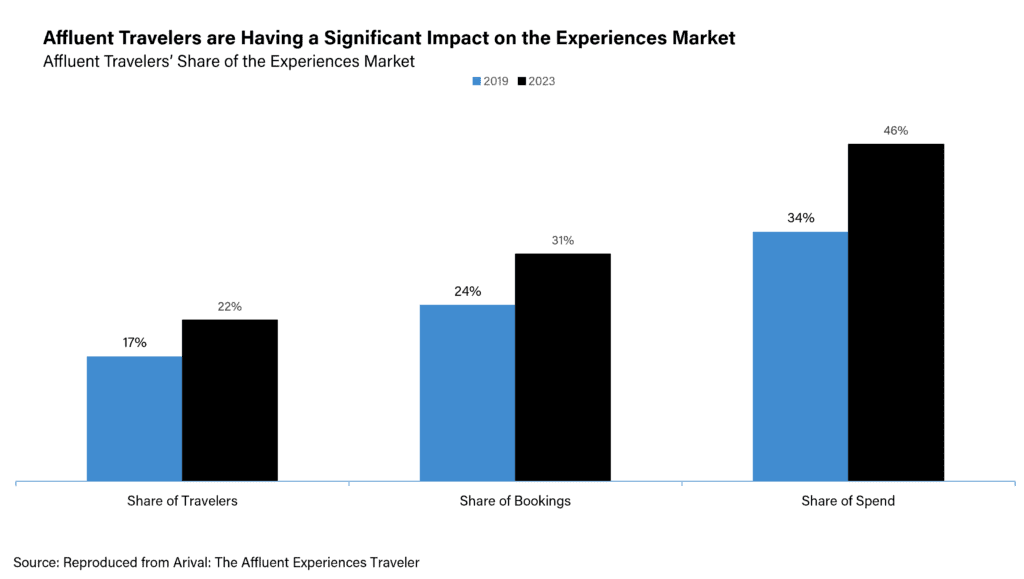Skift Take
Luxury travel is evolving beyond traditional luxury, with adventure and experiences driving the trends.
Saniya Zampure
Luxury travel is no longer limited to high-end shopping, spas, lavish dining, and a variety of opportunities to splurge.
Higher-income households (those earning more than $150,000 a year) are now opting for adventure and experiences.
And what this group wants matters: they account for roughly 36% of global travel spending.
This shift was highlighted in a recent study by Arival, which found that affluent travelers now account for almost half (46%) of all spending on experiences, including tours, activities and attractions.


Adventure Travelers
According to Arival research, 59% of American travelers who traveled in 2023 participated in outdoor adventure activities. Luxury adventure travel combines activities with the comfort of high-quality accommodations and luxurious amenities and services.
According to a luxury traveler survey conducted by Skift Research last fall, 63% of luxury travelers said they are likely to seek out adventurous activities to enhance their luxury travel experience.


Nature, adventure and active travel experiences are projected to be a $1 trillion to $1.3 trillion market by 2025. According to Skift Research’s Q1 2024 U.S. Travel Trends Study, the majority of travelers are willing to spend more on adventure travel for more luxury experiences.


This trend is more pronounced among the younger generation, ages 18-44, who account for 67% of bookings and 70% of spending among affluent travelers. According to Skift’s research of Gen Z and millennials, young adventure travelers are motivated by nature and community.
Earlier this year, Pelorus, a luxury tour operator offering extreme experiences averaging $140,000, told Skift that Gen Alphas (kids born after 2010) are a big influence in planning these trips. The company found that 12-year-olds are actively contributing to activity recommendations based on their interests, what they’ve learned in school, what they’ve researched online, nature-themed documentaries and more.
According to Knight Frank’s 2024 Wealth Report, the global HNWI population is expected to grow by 28% between 2023 and 2028.



